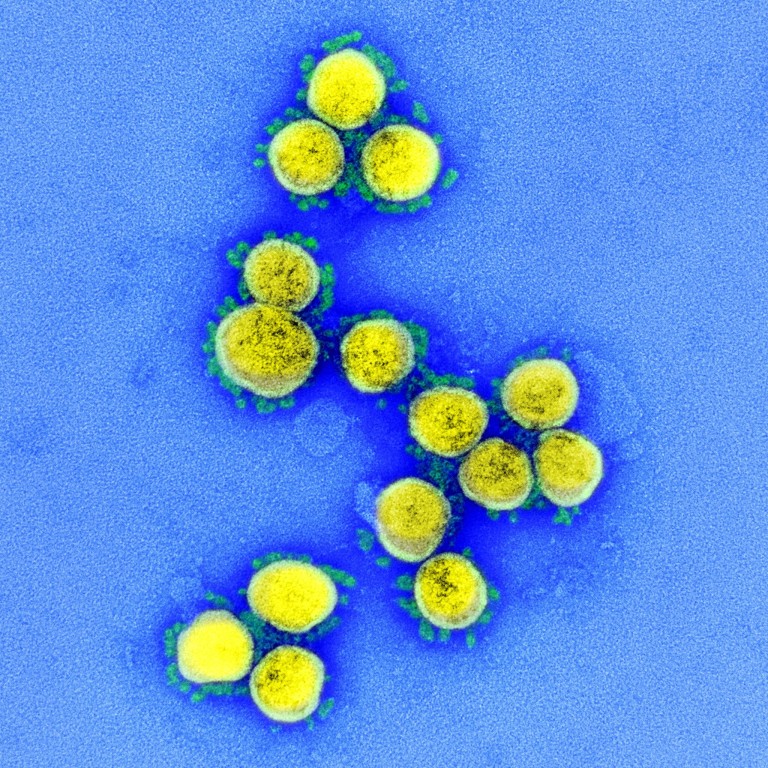
Coronavirus mutation becomes ‘urgent concern’ as it dominates across Europe and North America
- Researchers in Britain and US find 13 mutations in spike protein, one of which is becoming increasingly prevalent as Covid-19 spreads round globe
- New form has matter scientists split over whether it is likely to prove more transmissible or deadly than the original strain identified in China
Researchers have identified a coronavirus mutation that has quickly become dominant as Covid-19 spreads around the world, but it is unclear yet whether the strain will prove more contagious or deadly than the original.
A study led by Bette Korber, a computational biologist at the Los Alamos National Laboratory in New Mexico, found 13 mutations in the spike protein that the coronavirus uses to infect human cells.
One of these, known as D614G, was described as being of “urgent concern” because it had become “the dominant pandemic form in many countries”.
The report, published on April 30 on bioRxiv.org, a prepublication biology server, has not been peer-reviewed and was the subject of heated scientific discussions for not offering concrete evidence that the D614G mutation was more transmissible than the original strain.
Sperm containing coronavirus raises possibility of sexually transmitted Covid-19
Scientists say that it is natural for mutations to occur in viruses, but that more research is needed to test specific mutations to determine whether they are more infectious or dangerous.
The British and American researchers – including scientists from the Duke Human Vaccine Institute and the University of Sheffield – used more than 6,000 sequences for Sars-CoV-2, the official name of the coronavirus, from the Global Initiative for Sharing All Influenza Data database to identify the mutations.
It focused in particular on the spike protein, since it is the focus of most efforts to develop a vaccine.
The report said that the D614G mutation was “associated with increased transmission,” and was found to have become increasingly common through March after it was first identified in Germany.
In many cases, the strain became the “dominant form” a few weeks after it was introduced into populations, including in Europe, Canada and the United States, the researchers said.
They also said the mutation was “clearly established and expanding” in Asian countries outside China, where the original strain of the virus – known as D614 – had previously been dominant.
“When viruses with this mutation enter a population, they rapidly begin to take over the local epidemic, thus they are more transmissible,” Korber wrote in a now-inaccessible post on her Facebook page, seen by the Los Angeles Times.
“This is hard news, but please don’t only be disheartened by it.”
Coronavirus vaccine: WHO to issue guidelines on proposed use of human challenge trials
The Los Alamos team also looked specifically at individuals with Covid-19 in Sheffield, England to determine whether the D614G mutation had any impact on the severity of the disease, but found no specific correlation with the medical outcomes for patients.
But other scientists were more sceptical of the study’s claims. Bill Hanage, associate professor of epidemiology at the Harvard TH Chan School of Public Health, tweeted that the claims in the preprint were “suspect, to say the least”.
“We need to distinguish between selection, in which a variant becomes more common because it leaves more descendants, and founder effects in which a variant becomes more common because it was fortunate rolling the dice,” he wrote.
“By that, I mean this variant may have been lucky and got introduced to places outside Wuhan[where the disease first emerged] and different approaches to social distancing early on. It’s not about the virus, it’s the environment and the opportunities for transmission.”
Angela Rasmussen, a virologist at Columbia University, was similarly critical of the conclusions from the computational analysis of virus sequences, writing that there is “no evidence that the dominant strain is such because it is ‘more contagious’.”
“They found a mutation that became dominant over time, but didn’t do anything to show its functional significance in transmission,” she tweeted.
“Spike D614G may well have functional importance. It may even increase transmissibility. But we won’t know until this is tested experimentally,” she added.

